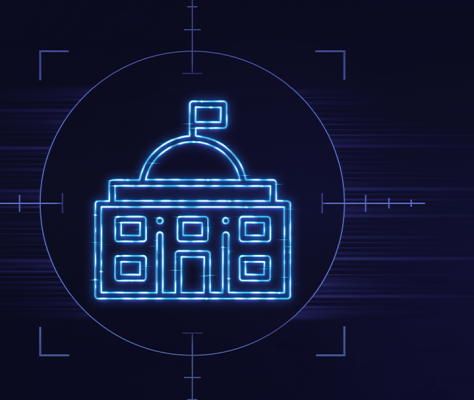Higher education institutions are under immense pressure to transform as digital-native students expect seamless, integrated experiences in their education journey. Their e-commerce experience allows them to order toothpaste, school supplies, eBooks, music, and videos with one click.
Similarly, students expect their higher education institutions to have a 360-degree view of them when they register for classes, buy basketball game tickets, subscribe to a meal plan, and so much more. Unfortunately, this often isn't the case. To access critical information, students need to engage with multiple systems and with possibly numerous logins.
A 360-degree view creates a personalized, lifetime student journey – from admissions to alumni – through integration of disparate systems. The best way for higher education institutions to adopt a “Student 360” mindset is through integrating these systems and automating tedious processes.
The goal should be to delight their constituents with personalized experiences from the application stage to well after graduation as brand-ambassador alumni and donors. Here are three ways to quickly and sustainably build Student 360 experiences.
Using a secure, standardized integration approach to unlock data
For many higher education institutions, systems of record sit centrally within the infrastructure and serve essential it purposes. Many institutions have adopted Customer Relationship Management Systems (CRM), Learning Management Systems (LMS), and Student Information Systems (SIS) along with a host of HR, finance, and ERP systems that house student records and support critical operational processes.
At the same time, institutions are dependent on data from their legacy systems. These core systems serve as a repository for the data that is generated to power daily institution activities. However, these systems are often closed and leave little room for innovation and growth outside of the platform itself.
It's challenging to securely access the right data at the right time, easily connect data across older and modern systems, and optimize value from technology investments. Altering these systems could also disrupt the entire architecture.
Enterprises have an average of 1,061 applications – which is growing. Data living in silos have little value. Integrating the silos point-to-point with no reuse is costly, unsustainable, and risky from a security perspective.
What's needed is a way to identify the most-used systems of record and enable them with centralized discovery and governance. This approach allows IT and development teams to create catalogs of highly-reusable building blocks in the form of APIs. These APIs empower other developers to quickly build composable applications without worrying about changes to the underlying systems of record.
The API isolation enables the modernization of the underlying systems of record without disrupting the applications that use the APIs. Governance ensures that all APIs adhere to security policies, and visibility of API utilization lets the API teams know which APIs to optimize, enhance, and retire. By implementing an API-first strategy and standardized integration approach, IT teams can create more connected, agile, and secure systems of record.
Deliver connected constituent experiences with a unified view
Now that we have standardized APIs for our systems of record, we can integrate them to deliver new services and experiences for students, faculty, staff, and alumni. For instance, you can create a “Student 360” API that provides a single source of truth for student information by integrating various systems of record: LMS, SIS, CRM, and legacy systems into a holistic view.
You can then create a “Faculty 360” API with minimized incremental effort by reusing the same components. From there, you can reuse what you've built to deliver a “Donor 360” API, a “Sports Fan 360” API, and more.
Once you create these 360-degree views of constituents, you can then expose this data in web portals or mobile applications pulling from the Student 360 API and the Faculty 360 API. Each API and integration you create can be discovered, understood, consumed, and secured, enabling different teams across your institution to access data. Once you unlock that data, you can deliver better experiences for your constituents and leverage it to make more informed, proactive decisions.
With an API-led integration approach, it's also easy to adapt to any changes or new demands. Whether you want to migrate your legacy system or integrate a new cloud-based application, you don't need to change your integration process or architecture. The foundation you've built is future-proof as every API and integration you've built can be reused for future projects and shared across teams.
Georgetown University precisely did that with its Georgetown 360 initiative that improved student success, reduced timelines of new integrations with reusable APIs, and increased administrative efficiency and community connection by democratizing access to data.
Integrating reusable APIs to create 360-degree views of constituents leads to improved student and faculty success, enviable constituent experiences, improved efficiency, and increased community connection.
Streamline operations and efficiency with automation
Now that you have a toolkit of reusable assets, you can give them a life of their own through automation. MuleSoft Composer allows non-IT teams to automate integrations to common systems without code through pre-built connectors and APIs.
For the legacy systems and documents that don't inherently have API access, Robotic Process Automation, or rpa, “screen scrapes green screens” of legacy terminal-based applications, extracts data from PDF forms, and inserts the data collected into systems of record — all without human intervention. Combined with Composer, MuleSoft RPA enables end-to-end workflow automation at scale.
Composer and RPA workflows minimize opportunities for human error and reduce the time it takes to complete daily higher education tasks, including automating scheduling and enrollment processes, student data entry, administrative tasks, and the intake and upload of student documents.
Through automation, work gets done faster, easier, and correctly the first time, resulting in happier constituents and employees. Because time is now spent on higher value activities, staff efficiency and productivity increases as student experiences improve.
Conclusion
A “Student 360” mindset is critical for higher education institutions to meet the rising expectations of today's digital native students. Integrating systems of record, building a unified view of constituents, and streamlining operations through automation are three keys to achieving this mindset.
By implementing these strategies, higher education institutions can provide personalized experiences for their students from the application stage, throughout their education, and after graduation. They can improve student success, increase administrative efficiency, and foster community connection. With the right approach, higher education institutions can continue to provide valuable experiences for their students and stay ahead of the ever-evolving landscape of education.
To learn more about how IT can drive student and institution success, check out our eBook, Digital Transformation in Higher Education.









